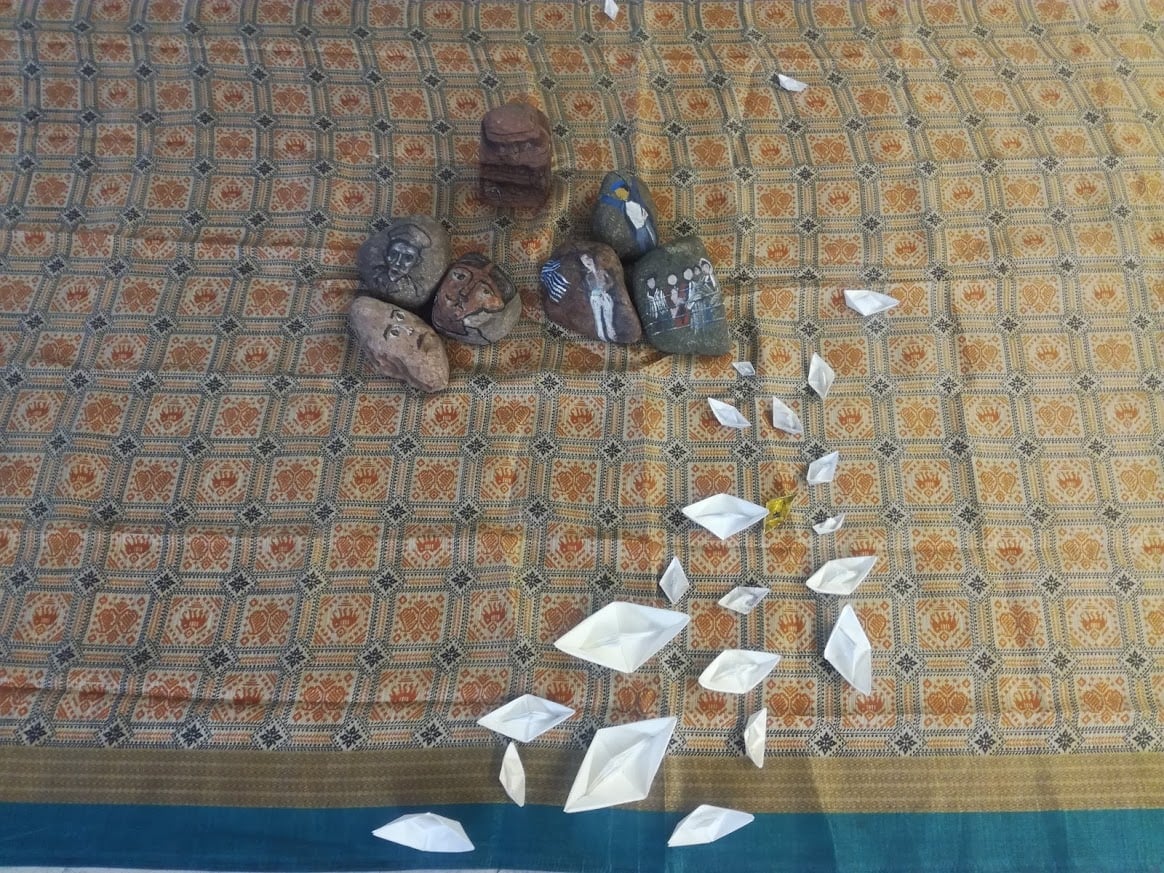A Profound Artistic Journey
In 2020, as a student at ISBA, Institut supérieur des beaux-arts de Besançon, I had the unique opportunity to participate in an “Atelier Recherche Création” at the Musée de la Résistance et de la Déportation of Besançon before its renovation. Guided by my drawing and art history teachers, this research project profoundly impacted me, particularly the portraits and pictures of prisoners, their drawings, and the objects they used.
Emotional Connection to War
Although I, as a Bangladeshi, do not have a direct connection with the First or Second World War, my deep sentimental connection with war stems from the history of my country. The Indian subcontinent’s struggle for independence and Bangladesh’s Liberation War against Pakistan have always been integral to my upbringing. Growing up, I was immersed in stories of resilience and survival, shaping my understanding of the human spirit during times of conflict.
Artistic Representation: Portraits on Stones
Inspired by the poignant images of prisoners, I aimed to represent their faces and stories through a unique medium. At my art school, I found stones of various shapes and sizes, which I decided to use as canvases. Drawing portraits and pictures on these stones became a symbolic act, representing both the weight of history and the resilience of the human spirit.



Creating Faux Stones with Paper Mâché
In addition to using real stones, I experimented with paper mâché to create faux stones. This choice was symbolic, as stones are often the simplest and most common objects used for self-defense in the absence of weapons. These faux stones allowed me to expand my canvas and explore different textures and forms, adding depth to my artistic expression.
Symbolic Installations
I presented these stone portraits in various forms to convey deeper meanings. One installation featured the stones alongside paper boats (origami), symbolizing the plight of immigrants and refugees. Another included a small prayer rug, representing the prisoners’ sentiments and spiritual resilience. These installations aimed to evoke a sense of empathy and reflection in the viewers, connecting the past with the present.

The Impact of COVID-19
While there were plans to organize an exhibition at the Musée de la Résistance et de la Déportation of Besançon, the COVID-19 pandemic unfortunately led to its cancellation. Despite this setback, the experience was incredibly meaningful and transformative for me. It allowed me to delve deeply into the stories of those who suffered and survived during the war, and to channel those emotions into my art.
A Heartfelt Experience
The project at the Musée de la Résistance et de la Déportation was more than just an academic exercise; it was a heartfelt journey into the lives of people who endured unimaginable hardships. Through my art, I sought to honor their memories and bring their stories to life in a way that resonates with contemporary audiences. This experience reinforced my belief in the power of art to bridge historical gaps and foster a deeper understanding of human experiences.
Conclusion
Exploring the art inspired by the prisoners of World War II was a profound and emotional journey for me. As an artist, it provided an opportunity to connect with the past and reflect on the universal themes of resilience, survival, and hope. The process of creating these works, despite the challenges posed by the pandemic, was a testament to the enduring power of human creativity and spirit.
I invite you to explore these works and reflect on the stories they tell. Through this project, I hope to contribute to a broader understanding of the human condition and the enduring impact of history on our present and future.


Leave a Reply